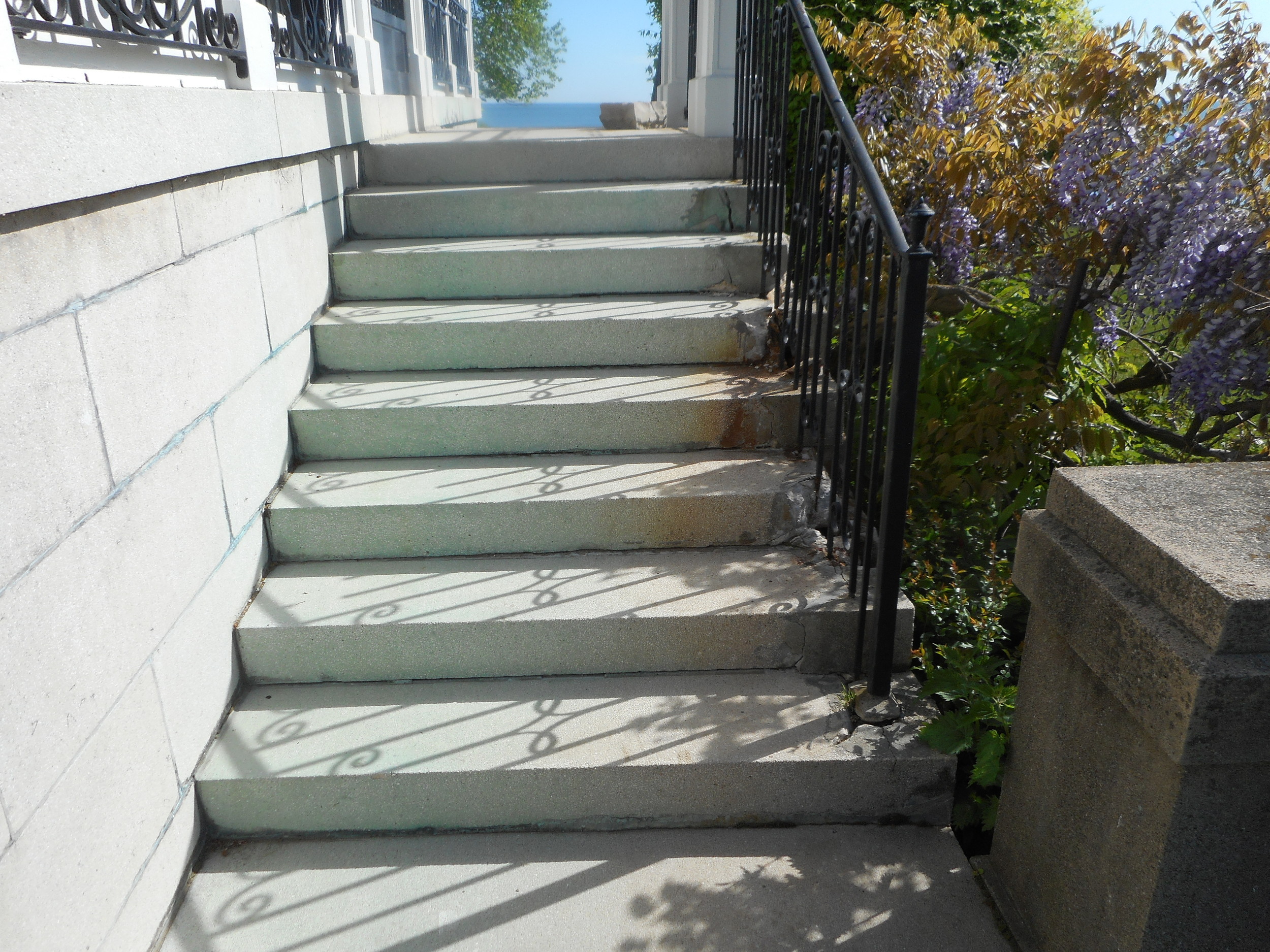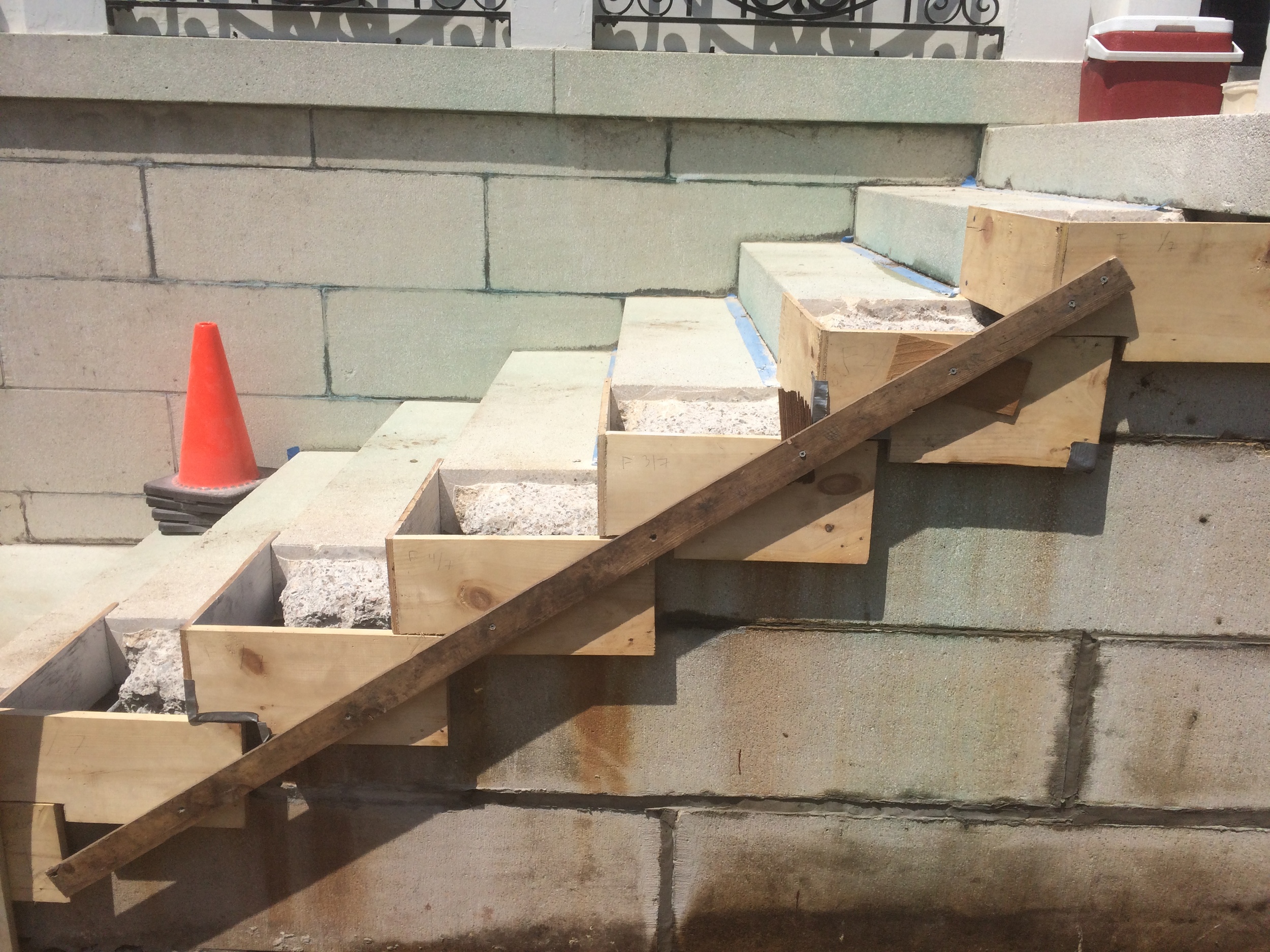While the manufacture and use of cast stone in building dates to the 12th century in Europe, its widespread use here began around the turn of the last century as a cheaper alternative to cut natural stone. An extremely hard and durable product, it can nevertheless fall victim to a common failure in masonry construction—rusting at the base of metal railings or other embedded elements. On the shore of lake Ontario, in a magnificent 1930-era house built on a four acre estate on Rock Beach Road, we dealt with an example this summer.
When cast iron or steel rusts it exfoliates, and, like freezing water, exerts tremendous lateral pressure, often sufficient to damage or break off the surrounding concrete or stone. The masonry student will observe that this phenomenon at the base of steel handrails, even relatively new ones, is incredibly common on both residential and commercial structures, especially in an environment where de-icing salt is used. Our industry refers to this as job security.
The solution is a series of small steps: removal of the damaged sections and rusted steel down to a sound surface, use of pins and adhesive to bond a new pour to the existing, form and pour a mixture formulated to match the hundred year old product, and finishing. In this case the steel railings that caused the failure were skillfully restored and reworked to engage the steps with fewer posts, and powder coated for longevity. Good for another hundred years, more if kept painted.









